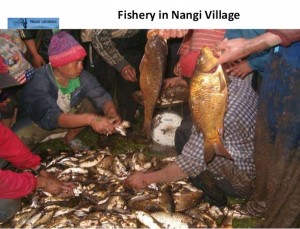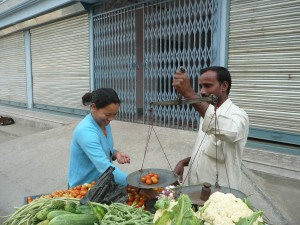The Rallapalli Foundation continued to fund projects and work with Mahabir Pun, in the Nangi area. In 2004 a fish pond was created to provide a source of protein and income. The same year they funded the remodel of an older building into a science lab and provided the equipment. During these years the Rallapalli’s developed a deep respect for Mahabir Pun’s work ethic. They completely trusted him with the funds and his choice of projects, although they regularly required project reports and financial accountability.
One final project is still a dream. In 2005 Mahabir attempted to start a hydro project in the Nangi area that would generate enough electricity to support the school and earn income by selling excess electricity on the grid. A feasibility study was done by a Nepali engineer but the Rallapalli’s thought there were too many potential problems and unanswered questions concerning actual construction. They decided to commit partial funding of $20,000 USD. Mahabir and the village would have to either borrow or raise the equivalent. Actions, such as challenging a community to invest in a project, does test merit and committment. The money is still available but Mahabir has not pursued building the hydro plant, although it is still on his dream list…
Mahabir’s dream for a hydro electric plant has grown to a larger scale. in the last two years he has made a proposal to the Nepali government to build a hyrdo power plant in the Kathmandu Valley and use the gains to fund public projects, specifically an Innovation Center. More about the Innovation Center in future posts, but for now Nangi has benefited from smaller solar electric projects using battery backups which provide a steady source of electricity for students in the school and a single 25 watt light bulb in their huts.
Join me next week for more about Mahabir Pun’s many projects and a look into his strategy.


